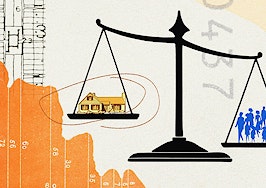The nationwide median rent in August remained unchanged year-over-year for the first time since 2012, according to Zillow’s latest housing data survey. The median rent is actually lower than it was in August 2017, in 19 of the nation’s 35 largest housing markets.
“Earlier this year, the housing market was a story of diverging paths, with rents steadily cooling and home values picking up speed,” said Aaron Terrazas, Zillow’s senior economist. “Normally rents and home values are tied together, but strong apartment construction and a surge of young homebuyers contributed to this historical anomaly.”
But now rents and home values are following the trend of the weather and starting to cool as the season changes to fall.
“The feverish housing crunch of the past few years seems to be cracking,” said Terrazas. “Slower rent growth means that renters may feel less urgency to buy. While home values continue to grow at double their historic pace, the speed of appreciation is down sharply from its spring highs.”
Annual rent appreciation has slowed for six straight months, according to the study, and has remained below 3 percent annual increase for the past 27 months. In July 2015, rent appreciation was growing as fast as 6.6 percent.
Rent fell the most in Portland, Oregon where the $1,834 median is 1.8 percent lower than last year. It rose the sharpest in Riverside, California where it’s up 3.7 percent over the past year to $1,899. The median rent nationwide is $1,440.
Home appreciation has also fallen to its slowest pace in two years, according to the study. Home values rose 6.5 percent over the past year to a median value of $216,700. Annual appreciation reached its peak of 8.2 percent in March 2018.
Different cities tell a different story, however. In San Jose, California, the median home value is up 22.7 percent since August 2017. Las Vegas, Nevada, and Atlanta, Georgia are also still posting double-digit home price growth at 12.0 percent and 10.4 percent, respectively.
Inventory decline has also slowed substantially. In August, there were 3.6 percent fewer homes for sale than the year before, the 43rd consecutive month that inventory has fallen on an annual basis. In August 2017, however, inventory was down 13.1 percent, year-over-year.












